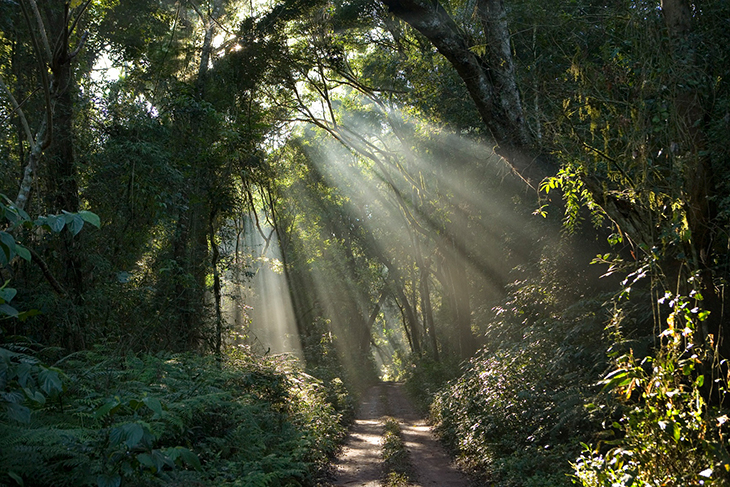
From worldwide hurricanes, to major floods, and massive wildfires on different continents across the earth, there is no denying that climate change is a real problem. But there are actually simple ways to naturally help the earth heal, and that’s through regenerated forests. Rather than doing mass planting, forests that are left to their own devices.
In fact, if this was practiced in Brazil, they could actually reach 150% reforestation if left to regrow on their own. Brazil’s Atlantic Forest biome has been recognized as a UNESCO Biosphere Reserve, as well as a Brazilian Natural Heritage site, and is considered to have an incredibly healthy biodiversity, including golden lion tamarins and ocelots.
Sadly, a study from 2018 shows that because of logging and other agricultural expansion, it has lost almost 80% of its original area. But what this also means is that it’s an ideal location for doing restoration initiatives.
As reported by Forest News, the Atlantic Forest in Brazil is actually the ideal habitat within the country to use for natural reforestation. In fact, there was another study that looked into the Atlantic Forests for this particular purposes, mapping and quantifying their potential for this purpose. What researchers found was that from the 34.1 million hectares of current forest cover – which is equivalent to 131,000 square miles – of which 8% managed to naturally regenerate between the years 1996 and 2015.
Meanwhile, the study also shares that another 20 million hectares can also be reforested by mixing both natural and assisted strategies from now until 2035, which could actually save $90 billion in operation costs.
They explain that the savings in dollars is actually the most vital considering that efforts of natural forest regeneration only accounts for 2% of total climate change funding in the whole world. Moreover, soil preparation and tree planting can cost between $1,400 and $34,000 per hectare on average.
Allowing Nature to Take Its Course
According to the Center for International Forestry Research, they feel that it would be best to help the world’s climate change issue would be to just stop trying to do anything and allow nature to take its natural course.
A few examples of successful natural reforestation can be found in the UK and in Ireland, both nations that allow the restoration of their ecosystems. They have managed to exceed by simply allowing nature to do what it does best.
One example is the 3,500 acres of Knepp Estate, which did a rewilding project. They managed to create a vast biodiverse ecosystem within lower England. Moreover, a 1,600-acre estate named Dunsany Castle that’s over 600 years old and located in south Ireland, managed to do something similar as well.
Amazingly, by allowing natural regeneration of forests, it actually has the potential to restore way more biodiversity, especially when assisted with seed dispersion, de-weeding and other types of reforestation management approaches.
In fact, a meta-analysis looked at 133 papers on this exact topic and found that when forest areas are left alone from man-assisted agriculture and allowed to regenerate on their own, they managed to grow ‘56% greater species richness in all categories of animals, and in five measures of vegetation structure: cover, density, litter, biomass, and height.’
According to co-director of the rewilding program at Knepp Estate, Isabella Tree, “Instead of conserving with specific species in mind where you’re focusing on keeping a habitat, locking it down as it is, so that that preserves the numbers of certain species, what we’ve done here is just taken our hands of the steering wheel and just stood back and let nature take over.”
Meanwhile, another benefit that occurs from natural reforestation is that they manage to trap more carbon in the soil. One study published in Nature showed that ‘regenerated forests absorb 32% more carbon above ground, and sequester 11% more below, than is generally estimated by the Intergovernmental Panel on Climate Change.’
Notably, if scientists and policy makers want these regenerated forests to last, they also need to prove to locals and other groups that the benefits of leaving these forests alone to regenerate are worth it, but that they need to be left alone for the long-term.
Some suggestions in the Forest News article are having a payment system for those that live within the area who choose to leave or to protect the forests. Or to grant increased access to investment capital for agroforestry production, rather than to use the trees for wood or other needs.
What are your thoughts? Please comment below and share this news!
True Activist / Report a typo


